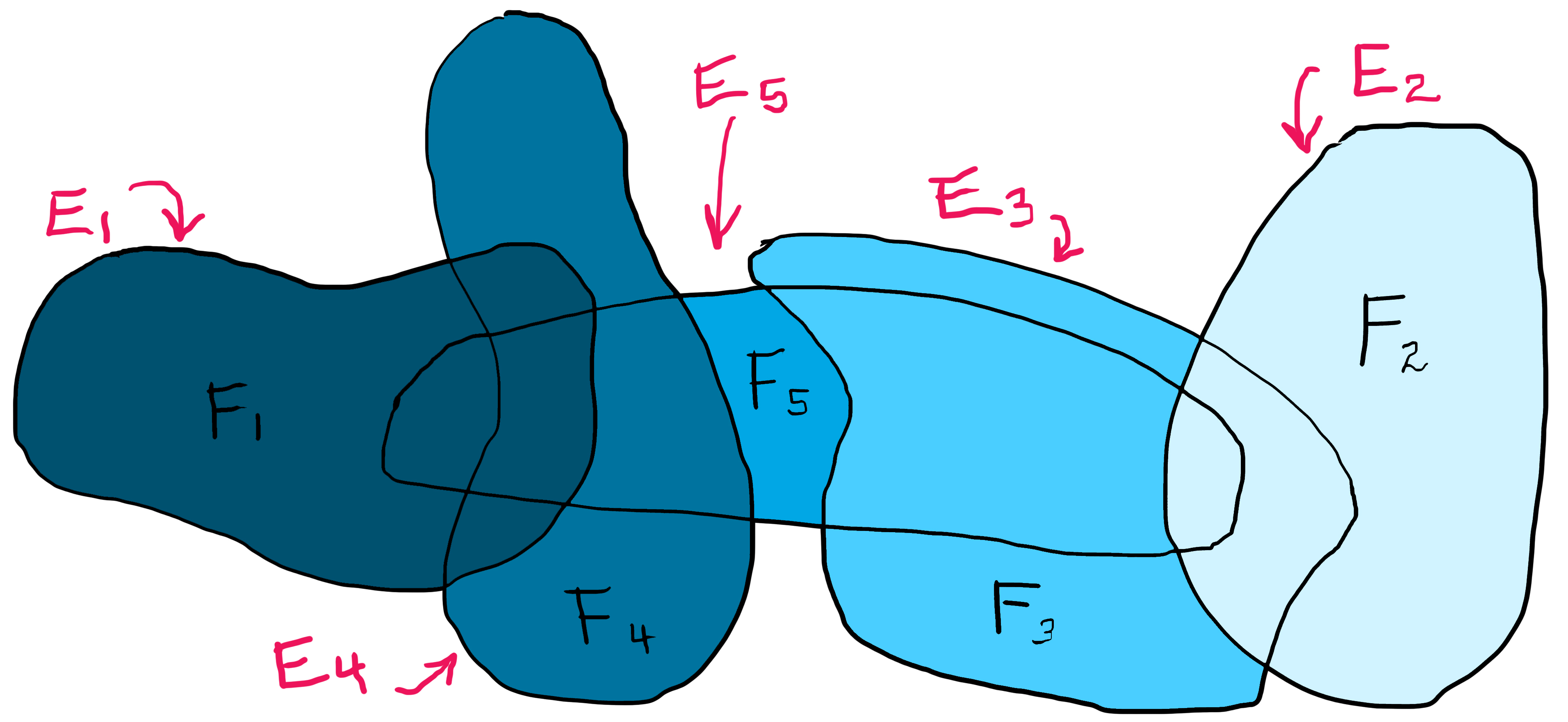Need Some Disjoint Sets? (A Measure Theory Trick)
Here's a quick "trick" that arises early on in a study of measure theory:
Trick: Given a countable collection of measureable sets E1,E2,… in some set X, consider their union ⋃∞i=1Ei. There exists an algorithm which allows us to create a new countable collection of measurable sets F1,F2,… such that the Fi are pairwise disjoint and have the same union as the original, i.e. ∪iFi=∪iEi.
Here's how:
- Step 1: Given {Ei}∞i=1, set F1=E1.
- Step 2: For each i>1, define Fi=Ei∖⋃i−1j=1Ej.
- Step 3: Observe that the Fi,Fj are pairwise disjoint and that ⋃∞i=1Ei=⋃∞i=1Fi. Voila!
To illustrate, suppose we have five sets: E1 through E5, represented by the five (very lopsided) "ovals" below. Then:


Each shade of blue represents one of the Fi, showing they are indeed disjoint. Also, their union ⋃5i=1Fi is equal to ⋃5i=1Ei as claimed.
As far as application goes, one place you might find this little trick is in the proof that if X is a measure space with measure λ, then λ is continuous from below. That is, if {Ei}∞i=1⊂X is a collection of measurable sets such that E1⊂E2⊂⋯, then λ(∞⋃i=1Ei)=∞∑i=1λ(Ei).

Side Comment: This trick is almost like the "measure theory version" of the Gram-Schmidt Process from linear algebra!
Gram-Schmidt: If A={v1,…,vn} is a set of linearly independent vectors in some vector space V, then there is an algorithm which converts A to an orthonormal set (so the vi, vj are "disjoint" in the sense that their inner product is zero) with the same span (i.e. the new collection of vectors has the same "cover" as the original).
